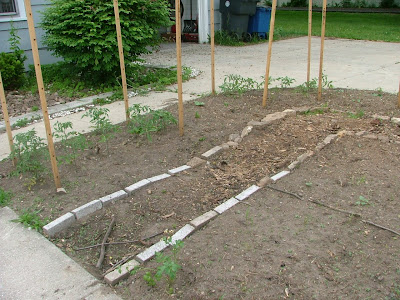 This time of year my time spent in the kitchen is an emotional roller coaster. On one hand, I get overwhelmed at daily harvests well beyond the appetite of my two person household. (Even though the chickens are picking up the slack nicely. They LOVE cucumber.) But then, on the other hand, the sickening out-of-control feeling ends quickly. I have a couple quiet days at work, or I spend a whole weekend at home without getting called up to substitute teach out of state. Or perhaps the weather decides to cloud over for several days straight and without so much sun the zucchinis and tomatoes, for the briefest moment, have decided to stop falling of the vine in voluptuous ripeness.
This time of year my time spent in the kitchen is an emotional roller coaster. On one hand, I get overwhelmed at daily harvests well beyond the appetite of my two person household. (Even though the chickens are picking up the slack nicely. They LOVE cucumber.) But then, on the other hand, the sickening out-of-control feeling ends quickly. I have a couple quiet days at work, or I spend a whole weekend at home without getting called up to substitute teach out of state. Or perhaps the weather decides to cloud over for several days straight and without so much sun the zucchinis and tomatoes, for the briefest moment, have decided to stop falling of the vine in voluptuous ripeness.This is the time, then, when I can finally catch my breath and catch up with the bounty of the garden. This is the exhilarating side of the roller coaster. This is when having such a wonderful garden feels like cheating.
I've said before that I am a gardener because I am an eater. I am a hedonist of culinary delights. I am a taster, so a plain flowerbed just doesn't do it for me. I am an artist, whose medium just happens to be edible. So, just to be clear here, I am a lot like a painter. A painter, who just happens use most exquisite, bright, succulent, paints and expansive canvases, and who just has to pick them up from her front yard to begin creating with them.
Today, I realized my basil plants were dangerously close to going to seed again. So I judiciously pruned them back until they looked fat and bushy, just as a healthy basil plant should. Which, just to be clear, means that they looked like I hadn't even touched them, even after I harvested this much basil:
 This is 1 lbs. 3 oz of sweet Italian basil. This much basil has a street value of $37.81. (Anyway, that's the going rate at the local grocery store before sales tax).
This is 1 lbs. 3 oz of sweet Italian basil. This much basil has a street value of $37.81. (Anyway, that's the going rate at the local grocery store before sales tax).This much basil can only mean that I desperately needed to make pesto. The aroma of basil alone makes me swoon. How can I even begin to describe how seductive it is? It is sultry. Basil is not quite earthy, not quite forestry, not quite sweet, and not quite peppery though it evokes all of these. No, basil is more like getting a whiff of an old lover's cologne, but not not being able to remember the name (of the cologne, not necessarily the lover).
Making pesto in bulk is like stretching and priming a canvas. Although fresh pesto tossed with al dente pasta and a few sun dried tomatoes is a dish everyone should have in their repertoire, today's creation was more about preserving pesto for later, for having pesto on hand as a base or for a subtle flavoring in other recipes. This pesto is for using in the dead of winter when fresh basil at the grocery store is $31.84/lb.
 Pesto is super-easy. Basil. Garlic. Pinenuts. Olive oil. Parmesan. Salt. Pepper. In that order. I'm not going to give you a recipe because the amounts are fairly flexible, and honestly, it's easy to find a good pesto recipe anywhere. I like Mollie Katzen's from The Enchanted Broccoli Forest.
Pesto is super-easy. Basil. Garlic. Pinenuts. Olive oil. Parmesan. Salt. Pepper. In that order. I'm not going to give you a recipe because the amounts are fairly flexible, and honestly, it's easy to find a good pesto recipe anywhere. I like Mollie Katzen's from The Enchanted Broccoli Forest.When it's all pureed together, I simple freeze the pesto in ice cube trays, and once they're frozen transfer them to a freezer bag. (Some advise against freezing pesto with Parmesan in it, but I've never had a problem.) Then, all winter I can grab pesto from the freezer by the cubed tablespoonful. And when I do, I'll remember this day in July. This day when I was throwing an obscene amount of basil leaves around like fist fulls of waded up cash.






